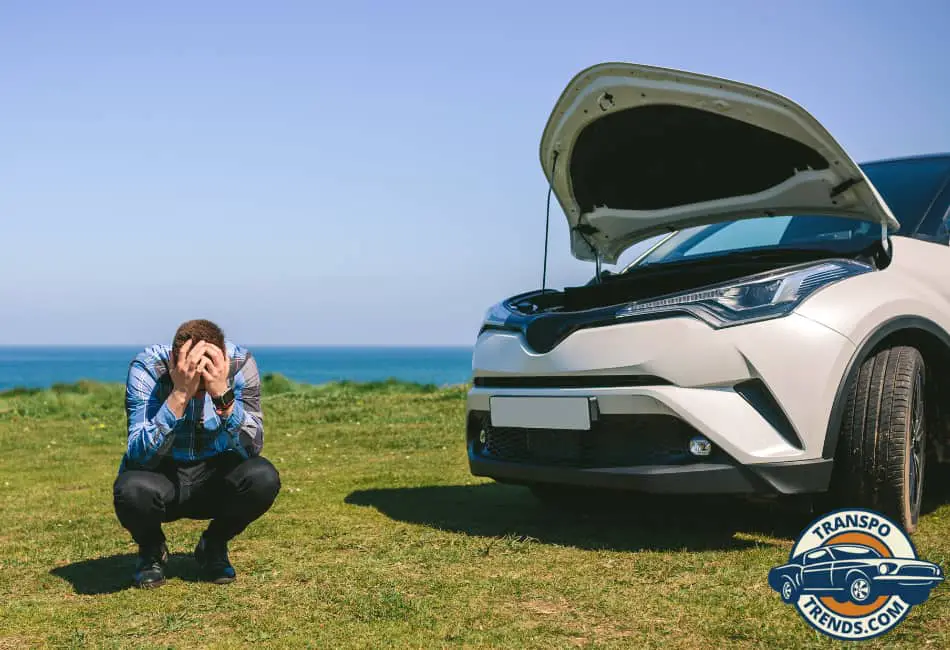Jump-starting a car is a common practice that comes in handy when your vehicle’s battery is drained or dead.
Although this life-saving technique can get you back on the road quickly, there are instances where your own car may refuse to start after jump-starting another vehicle. In such situations, it’s crucial to understand the possible causes and solutions to resolve the issue effectively.
This article sheds light on the basic process of jump-starting a car, the potential risks involved, and common reasons why your car might not start after providing a jump.
By troubleshooting the problem and taking appropriate precautions, you can ensure a smooth and hassle-free experience when assisting others with a jump-start.
Understanding Jump-Starting a Car
Jump-starting a car is the process of using another vehicle’s battery or an external power source to provide the necessary electrical charge to start a car with a dead or weak battery.
This temporary solution can help you get back on the road when facing a drained battery, especially in emergency situations.
There are several reasons why someone might need to jump-start a car. Some common scenarios include;
- leaving the headlights or interior lights on for an extended period,
- a faulty alternator that fails to charge the battery while driving,
- or simply an aging battery that has lost its ability to hold a sufficient charge.
While jump-starting a car can be a helpful solution, it also comes with potential risks if not done correctly.
- Improper connections or grounding,
- short circuits, and
- Sparking can damage vehicles’ electrical systems and batteries or cause injuries.
As such, following proper procedures and using appropriate jumper cables when jump-starting a car is crucial.
Before attempting a jump-start, it is essential to consult your vehicle’s owner’s manual for specific instructions and warnings.
Step-By-Step Guide to Jump-starting a Car Safely
Here’s a step-by-step guide on how to jump-start a car in a way that both the dead car and donor car does not get affected negatively;
Step 1: Safety First
- Ensure both cars are turned off, with their keys removed from the ignition.
- Engage the parking brakes and put automatic vehicles in ‘Park’ or manual vehicles in ‘Neutral.’
Step 2: Position the Vehicles
- Position the working vehicle close to the one with the dead battery but not touching.
- The jumper cables should be long enough to reach both batteries comfortably.
Step 3: Prepare the Jumper Cables
- Unravel the jumper cables and ensure they are untangled.
- Inspect the cables for any visible damage, such as frayed wires or cracked insulation.
Step 4: Identify the Batteries and Terminals
- Locate the batteries in both cars and identify the positive (+) and negative (-) terminals.
- They are usually marked with red and black colors, respectively.
Step 5: Connect the Positive Terminals
- Attach the red jumper cable’s clamp to the dead battery’s positive (+) terminal.
- Then, connect the other end of the red cable to the positive (+) terminal of the working vehicle’s battery.
Step 6: Connect the Negative Terminals
- Attach the black jumper cable’s clamp to the negative (-) terminal of the working vehicle’s battery.
- Next, connect the other end of the black cable to an unpainted metal surface on the engine block or chassis of the car with the dead battery.
- This serves as a ground connection and helps prevent sparking.
Step 7: Start the Working Vehicle
- Start the working vehicle’s engine and let it run for a few minutes to allow the dead battery to charge slightly.
Step 8: Attempt to Start the Dead Vehicle
- Try starting the car with the dead battery.
- If it starts, allow it to run for a few minutes to help recharge the battery further.
- If it doesn’t start, let the working vehicle run for a few more minutes and try again.
Step 8: Disconnect the Jumper Cables
- Once the dead vehicle is running, carefully disconnect the jumper cables in the reverse order of how they were connected.
- Start by removing the black clamp from the ground connection on the previously dead vehicle, then the black clamp from the working vehicle’s negative (-) terminal.
- Finally, remove the red clamp from the working vehicle’s positive (+) terminal and then the red clamp from the previously dead vehicle’s positive (+) terminal.
Step 9: Drive the Jump-started Car
- Drive the car that was jump-started for at least 20-30 minutes to allow the alternator to recharge the battery.
- If the vehicle doesn’t start again after turning it off, the battery may need to be replaced or there might be an issue with the charging system.
Causes for Donor Car Not Starting after Jump-Starting
After providing a jump-start to another vehicle, you might face issues with your own car not starting. Understanding the common causes behind this problem can help you troubleshoot and find a solution effectively.
Dead Battery
Jump-starting another car can sometimes drain the battery of the vehicle providing the jump, especially if the assisting vehicle’s battery is weak or old. Transferring electrical power to the dead vehicle might leave your battery without enough charge to start the engine.
Incorrect Jump-Starting Procedure
If the jumper cables were connected incorrectly, such as reversing the positive and negative clamps or not properly grounding the negative cable, it could affect your car’s ability to start. Improper connections can lead to short circuits, blown fuses, or damage to the electrical system.
Electrical System Issues
Jump-starting a car involves a high amount of electrical current, which can sometimes cause damage to sensitive electrical components or disrupt the vehicle’s electronics. This might result in issues like blown fuses, damaged relays, or malfunctioning sensors, which can prevent your car from starting.
Weak Alternator
The alternator is responsible for charging the battery while the engine is running. If your alternator is weak or malfunctioning, it may not have been able to recharge your battery sufficiently during the jump-starting process, leaving your car without enough power to start.
Loose or Corroded Battery Connections
Loose or corroded battery connections can impede the flow of electrical current and prevent your car from starting. While providing a jump-start, the clamps’ connection might have loosened or dislodged corrosion, causing a poor connection between the battery terminals and the cables.
Starter Motor Issues
The starter motor is responsible for turning the engine over when you turn the key or press the ignition button. It’s possible that the starter motor has developed a fault or experienced a failure coincidentally during the jump-starting process, making it unable to crank the engine.
Troubleshooting Steps
When your car doesn’t start after jump-starting another vehicle, it’s essential to troubleshoot the issue systematically. Here are some steps you can take to identify and resolve the problem:
Checking Battery Connections
- Turn off your vehicle and remove the keys from the ignition.
- Put on gloves and safety glasses for protection.
- Locate the battery in your car and inspect the connections.
- Ensure that the battery terminals are free of corrosion. If there is significant corrosion, use a wire brush or battery terminal cleaner to clean the terminals.
- Check if the battery cables are securely connected to the terminals. Tighten any loose connections with a wrench.
- Inspect the cables for damage or fraying, and replace them if necessary.
Recharging the Battery
- If you suspect your battery is drained or weak, recharge it using a charger. Follow the manufacturer’s instructions for connecting and using the charger.
- Alternatively, you can use another vehicle or a portable jump-starter to jump-start your car. Follow the step-by-step guide provided earlier in this article.
- Once your car is running, drive it for at least 20-30 minutes to allow the alternator to recharge the battery.
- If your car still doesn’t start after attempting to recharge the battery, consider replacing the battery, as it may no longer hold a sufficient charge.
Addressing Electrical System Issues
- If you suspect electrical system issues, such as blown fuses, damaged relays, or malfunctioning sensors, start by checking your vehicle’s fuses and relays. Consult your owner’s manual to locate the fuse box and identify the specific fuses and relays related to starting your car.
- Replace any blown fuses or suspected damaged relays.
- Inspect the wiring and connections related to your car’s ignition system, starter motor, and fuel system. Look for signs of damage or loss of connections.
- If you’re unable to identify or resolve the electrical issue, it’s advisable to seek professional assistance from a qualified mechanic or auto electrician. They have the expertise and tools to diagnose and repair electrical system problems accurately.
Inspect the Alternator
- Check for any warning lights related to your dashboard’s charging system or battery.
- Inspect the alternator belt for wear, damage, or improper tension. Replace or adjust the belt as necessary.
- Use a multimeter to check the voltage output from the alternator while the engine is running. A healthy alternator should produce a voltage between 13.5 and 14.5 volts.
- If the alternator output is outside this range or if you notice other signs of malfunction, consider having the alternator professionally tested or replaced.
Examine the Starter Motor
- Listen for any clicking or grinding noises when attempting to start your car, which could indicate a problem with the starter motor or solenoid.
- Locate the starter motor in your vehicle (refer to your owner’s manual) and inspect it for any visible damage or loose connections.
- If you’re comfortable working with electrical systems, use a multimeter to test the voltage at the starter motor’s terminals while attempting to start the engine. A healthy starter motor should receive approximately 12 volts.
- If you suspect the starter motor is faulty, consult a professional mechanic for further testing and possible replacement.
Considering these additional troubleshooting tips, you can further narrow down the cause of your car not starting after jump-starting another vehicle. Always prioritize safety and consult a professional mechanic if you’re unsure about any of the steps or require expert assistance.
Conclusion
In conclusion, jump-starting another vehicle can sometimes lead to issues with your car not starting due to various reasons, such as battery drainage, electrical system malfunctions, or coincidental component failures.
By following a systematic troubleshooting approach and addressing the root cause of the issue, you can effectively resolve the problem and get back on the road safely.
Moreover, practicing regular preventive maintenance and adhering to your vehicle manufacturer’s recommended guidelines can significantly reduce the likelihood of experiencing such issues in the future.
Always prioritize safety when working with your car’s electrical and mechanical systems, and consult a professional mechanic if you’re unsure about any steps or require expert assistance.
With proper care and attention, you can ensure the longevity and reliability of your vehicle, allowing you to confidently help others in need without compromising your own car’s performance.

